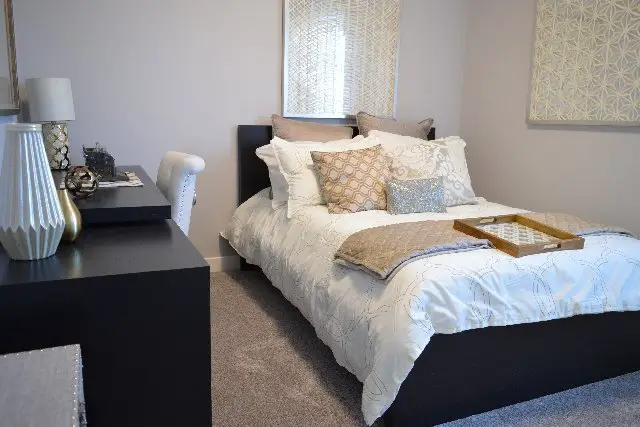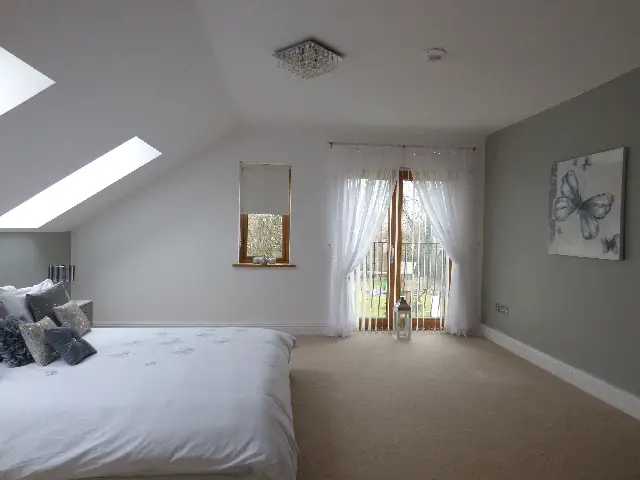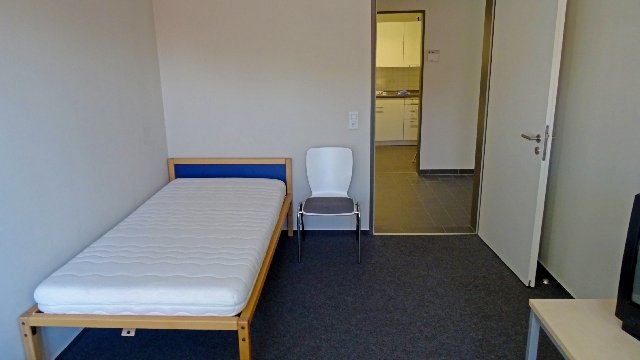Last Updated on July 11, 2023 By Emma W. Thomas
The minimum room size for a full bed depends on various factors such as personal comfort and the layout of the room. Generally, a room should have enough space to accommodate the full bed comfortably, allowing for easy movement around the bed and other furniture. While there is no strict rule for the minimum room size, a common guideline suggests that a room should have a minimum area of around 70 square feet (6.5 square meters) to accommodate a full-size bed comfortably.
Space requirements for a bedroom
A well-designed and comfortable bedroom requires careful consideration of its space requirements. Here are some key facts about space requirements for a bedroom:
- Minimum size: As per building codes, a bedroom should have a minimum floor area of 70 square feet (6.5 square meters) in the United States. However, it’s ideal to aim for a larger space to accommodate various furnishings and ensure comfortable movement within the room.
- Bed placement: The placement of the bed is crucial in determining the spatial layout of the room. It should be positioned against a solid wall for support and stability, leaving sufficient space on either side for ease of access.
- Clearance around the bed: Aim for a minimum clearance of 24 inches (60 centimeters) on each side of the bed. This allows for easy movement, making the bed easily accessible and facilitating bed-making tasks.
- Closet space: In bedrooms, having adequate closet space is essential for storage. This can be in the form of built-in wardrobes, walk-in closets, or standalone closets that accommodate clothing, accessories, and other personal items.
- Furniture placement: Consider the layout of additional furniture like nightstands, dressers, and desks. These should be positioned in a way that promotes functionality and doesn’t obstruct movement throughout the room.
- Lighting requirements: Adequate lighting is crucial for any bedroom. Ensure that the room has a mix of ambient lighting, task lighting, and accent lighting to create a comfortable and visually appealing atmosphere.
How big is a full (double) bed?
A double (or full) bed is 135cm wide and 190cm long, or 4 feet 6 inches wide and 6 feet 3 inches long. A double bed can fit a couple, although it is a tighter squeeze than a king-size bed.
A double bedroom is often used for teenagers or single people who like to have extra space in their bed than twin beds, a bunk bed, or a single bed would give them.

As a comparison, here are the sizes for other types of beds. Note that a queen-size bed is not as clear as it is in the US. There the queen bed is smaller than a king bed and larger than a double. In the UK, a queen bed can either refer to a small double or a super king.
- Super-king bed (sometimes known as a queen bed) = 6 feet wide and 6 feet 6 inches long
- King size bed = 5 feet wide and 6 feet 3 inches long
- Double bed = 4 feet 6 inches wide and 6 feet 3 inches long
- Small double bed (sometimes known as a queen bed) = 4 feet wide and 6 feet 3 inches long
- Single bed = 3 feet wide and 6 feet 3 inches long
- Small single bed = 2 feet 6 inches wide and 6 feet three inches long
- Toddler bed = 2 feet 3 inches wide and 4 feet 6 inches long
Bunk beds usually take a small single mattress but sometimes will take a single mattress.
Minimum bedroom size for a double (full) bed
When thinking about the minimum bedroom size for a double bed, you shouldn’t just be thinking about whether there is enough space to physically fit the bed into the room. Instead, you should also be thinking about how much space is left over once the bed is in the room. Unless perhaps it’s a guest room where you can use a sofa bed.
The clearance around the bed will contribute to the circulation space, meaning the floor space that you can use for navigating around the room. And it will also contribute to the space needed for other furniture in the room such as wardrobe space, chest of drawers, nightstands, a floor mirror or a dressing table, etc, as well as the space left for opening the doors and drawers.
In the UK, there are no minimum room sizes laid out in the law, although there are building recommendations for bedroom size. According to these, the minimum bedroom size for a double room should be 11.5 meters square (123.8 square feet).
This bedroom size allows for “comfortable clearances”. In other words, the amount of clearance that is needed both for circulation and furniture. You can get away with fewer square feet or meters but you would need to accept that there will be less room for other bedroom furniture.

At an absolute minimum bedroom size for a double bed, the bedroom dimensions could be 9 meters square (97 square feet).
If your bedroom isn’t a perfect square, you can think about how much space you need differently. Remember that clearance needs to be around the three sides of the bed that aren’t against the wall. The minimum clearance (distance between the bed and the next wall) should be 30 inches and for it to comfortably fit, you should be looking at 36 inches.
How to deal with smaller bedrooms
Minimum bedroom sizes don’t tell the whole story. Many of us live in houses where the bedrooms are on the smaller side and there are definitely ways that you can work with a small bedroom to fit your full bed without compromising too much on comfort.
Bed frames
Double beds have a standard mattress size but you also need to take into account the size of the bed frame. Some frames conform quite closely to the mattress size whereas others flare out and end up making the bed size much larger.
If you are working with a smaller bedroom size, then avoiding frames that take up additional space is always a good idea.
Utilize storage space
If you are fitting a full bed into a small bedroom size, thinking carefully about your storage space is a good idea. The less furniture you have that opens out into your clearance space, the more comfortable the room will be and the easier it will be to navigate.

You could think about finding a bed that has under-bed storage, for example, or you could choose a wardrobe with sliding doors that don’t open out into the room.
Bedroom layout
Bedroom layouts are important, especially when you have a small bedroom. It is always a good idea to map out your bedroom layouts beforehand and to think carefully about the circulation space and how you are going to use the square feet available on a day-to-day basis. Your bedroom should be a relaxing space and if it is difficult to get around the room while you are getting ready for the day or going to bed, this can make it stressful.
The bottom line
A full (double) bed is a reasonable middle ground between king-size beds and smaller beds like a bunk bed or single. It will fit into a bedroom that is medium-sized, usually the guest or spare room, and can fit a couple or a single person.
There is no absolute minimum bedroom size for a double bed, but you will need to have a reasonable amount of clearance space around the bed for navigating the room and using other furniture.
If you have a small bedroom, this can be more tricky but clever use of the space and furniture choices can help to compensate for the bed size.
References:
https://homeguides.sfgate.com/arrange-fullsize-bed-dresser-10-x-10-room-86364.html
https://www.dimensions.com/element/full-double-bedroom-layouts
Emma is a graduate of Domestic Science or Family and Consumer Sciences (Home Economics) from the University of Wisconsin. She has 7 years of experience Working with the strategic section of BestBuy and now writing full-time for Homeeon.
From Managing the Home, Interiors, Cleaning, and Exteriors to Gardening and everything about Making A Home Liveable – is her passion and this Homeeon is the result of this.
Emma loves decorating her home with the best stuff found online. She cares about quality over anything and writes reviews about them here in Homeeon. Get in touch with her over Pinterest.
Keep reading her blogs.
